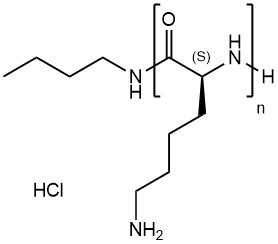Welcome to Iris Biotech
For better service please confirm your country and language we detected.

For better service please confirm your country and language we detected.

Thank you very much for your interest in our products. All prices listed on our website are ex-works, Germany, and may attract customs duties when imported.
You may/will be contacted by the shipping company for additional documentation that may be required by the US Customs for clearance.
We offer you the convenience of buying through a local partner, Peptide Solutions LLC who can import the shipment as well as prepay the customs duties and brokerage on your behalf and provide the convenience of a domestic sale.
Continue to Iris Biotech GmbHSend request to US distributorPublished on 31.07.2017

This also means that in contrast to PEGs, polylysines have one functional group per monomeric unit that can serve as an attachment point for further functionalization.
Naturally occurring polylysines are composed of units of L-lysine which are linked via their epsilon-nitrogen. These epsilon-polylysines can be produced by fermentation from Streptomyces spp., and are common food preservatives in certain Asian countries.
Conversely, N-alpha-linked polylysines can only be accessed via chemical synthesis. Alpha-polylysines are frequently used as coating materials for plastic tissue culture ware. Furthermore, their high density of positive charges renders them an ideal material for solubilization and delivery of insoluble or sensitive compounds into cells. Especially negatively charged compounds such as DNA show a strong interaction with polylysines. Unsurprisingly, polylysines are commonly used as non-viral gene delivery vectors. Modified polylysines, e.g. PEG/PLys copolymers, are promising starting materials for the formation of nanoparticles that can be used to encapsulate sensitive biomolecules, such as enzymes. Lastly, the presence of a multitude of functional groups renders polylysines ideal scaffolds for the multivalent presentation of biologically active molecules, e.g. certain oligosaccharides.
→ Visit our webshop to find a huge variety of Polymeric Carriers, ranging from mono- and polydisperse PEGs to different polyamino acids, to polyoxazolines.